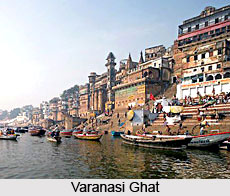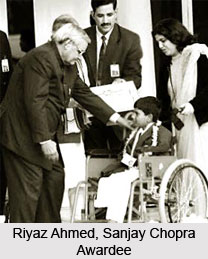 In Uttar Pradesh, there are the presence of different types of minerals as dolomite, gypsum, andalusite, magnetite, pyrophyllite, phosphorite, sibnite and bauxite. Several industries have come up in the region based on the presence of different types of minerals present in the region. There are cement plants in the Mirzapur area in the Vindhya region, a bauxite based aluminium plant in the Banda area and copper in Pithora Garh, Almora Chamboli and Tehri Garhwal. A coalfield is located at Singrauli in Mirzapur district. In the hills there are present a large variety of non-metallic minerals, which are used as raw materials in industries. The industries are engaged in the manufacturing of scales, locks, letter boxes, furniture, badges and belts, leather goods, scissor, handloom, carpet, glass, electrical goods etc.
In Uttar Pradesh, there are the presence of different types of minerals as dolomite, gypsum, andalusite, magnetite, pyrophyllite, phosphorite, sibnite and bauxite. Several industries have come up in the region based on the presence of different types of minerals present in the region. There are cement plants in the Mirzapur area in the Vindhya region, a bauxite based aluminium plant in the Banda area and copper in Pithora Garh, Almora Chamboli and Tehri Garhwal. A coalfield is located at Singrauli in Mirzapur district. In the hills there are present a large variety of non-metallic minerals, which are used as raw materials in industries. The industries are engaged in the manufacturing of scales, locks, letter boxes, furniture, badges and belts, leather goods, scissor, handloom, carpet, glass, electrical goods etc.
In the western regions of Uttar Pradesh, majority of the people depends on farming. Wheat, rice, sugar cane, pulses, oil seeds and potatoes are the main crops grown here. Sugar cane is an important cash crop grown here. Apples and mangoes are also produced in this state.
The common lives stock found here are cattle, buffaloes, goats and other animals. There are about 175 varieties of fish found here. Ornamental fishes are also found here in large varieties. Some of the ornamental varieties are rohu, hilsa, mahseer, mangar, snow trout and mirror carp.
Uttar Pradesh attracts a large number of national and international tourists. The main tourist sites are the city of Agra and the holy citie of Varanasi, Ayodhya, Mathura, and Allahabad. The sacred rivers as Ganga and the Yamuna are also here. Large multitudes of people all over the world come here to attend the Kumbha Mela which is hoisted by the State. Another important tourist attractions are Taj Mahal, Agra Fort, Fatehpur Sikri , Dayal Bagh.
Millions of tourists and pilgrims visit the cities of Allahabad, Varanasi and Ayodhya, as those are considered to be the holiest cities in India. Every year thousands gather at Allahabad to take part in the festival on the banks of the Ganges, the Magh Mela. The government is promoting the industry of tourism .






